Every Football Position: A Comprehensive Guide
Hey there, football enthusiast! Ever watched a game and found yourself scratching your head about who does what on the field? Or maybe you’re new to the gridiron and looking to get a grip on the essentials. Our guide breaks down the nitty-gritty of each football position. Whether it’s offense, defense, or special teams, we’ve got you covered.
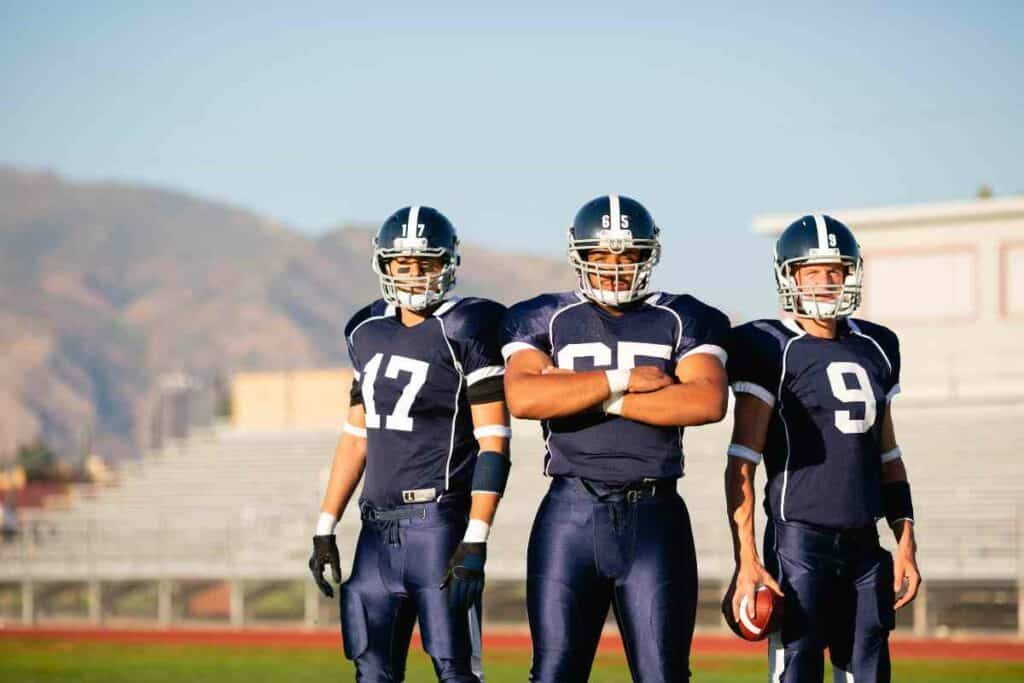
The history and evolution of American football is actually quite fascinating, with a few key individuals contributing to our modern conceptualization of football. For more info, check out our guide to the history of American football.
What are the positions in football?
Football consists of diverse positions split across offense, defense, and special teams. Offensively, you’ll find the quarterback, running backs, wide receivers, tight ends, and offensive linemen. Defensively, there are defensive linemen, linebackers, cornerbacks, and safeties. Special teams feature the kicker, punter, and returners for kickoffs and punts.
Football is more than just throwing and catching a ball. It’s a symphony of strategies, teamwork, and understanding the pivotal role each player brings to the game. Offense, Defense, Special Teams – each unit has a unique function and responsibility. Let’s dive deeper into each position and what they bring to the table.
Understanding Football Positions
Football is a complex sport with many different positions, each with their own unique responsibilities. Understanding these positions is key to appreciating the modern game. Football positions can be split into two main categories: offense and defense.
Offense
The goal of the offensive team is to advance the ball down the field and score touchdowns. There are several positions on the offensive team, each with their own specific responsibilities. Here are some of the key offensive positions:
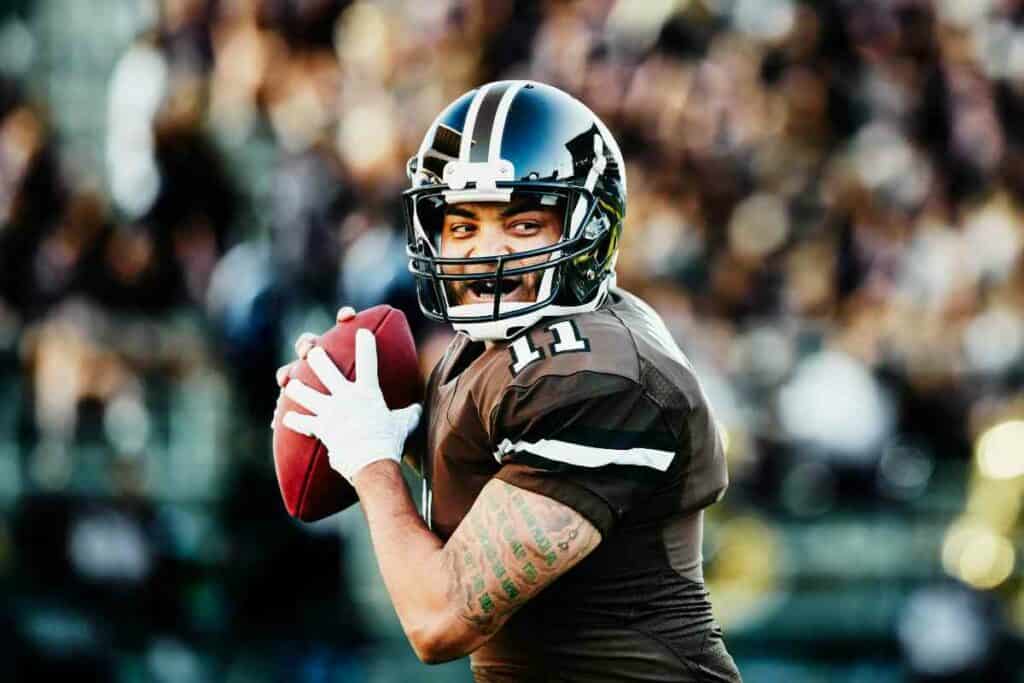
| Position | Responsibilities |
|---|---|
| Quarterback | The quarterback is the leader of the offense. They are responsible for calling plays, receiving the snap from the center, and either handing the ball off to a running back or throwing it to a receiver. |
| Running Back | Running backs are responsible for running with the ball and catching passes out of the backfield. They must be able to make quick cuts and evade defenders. |
| Wide Receiver | Wide receivers are responsible for catching passes from the quarterback. They must be fast and agile, with good hands and the ability to run precise routes. |
| Tight End | Tight ends are a hybrid between offensive linemen and wide receivers. They are responsible for both blocking and catching passes. |
| Offensive Linemen | Offensive linemen are responsible for protecting the quarterback and opening up holes for the running back. There are five offensive linemen on the field at any given time. |
Defense
The goal of the defensive team is to prevent the offense from scoring and to force turnovers. There are also several positions on the defensive team, each with their own specific responsibilities. Here are some of the key defensive positions:
| Position | Responsibilities |
|---|---|
| Defensive Linemen | Defensive linemen are responsible for stopping the run and putting pressure on the quarterback. They must be strong and agile, with good technique and the ability to shed blocks. |
| Linebackers | Linebackers are responsible for stopping the run and covering receivers. They must be strong and fast, with good instincts and the ability to read plays. |
| Cornerbacks | Cornerbacks are responsible for covering wide receivers and preventing them from catching passes. They must be fast and agile, with good technique and the ability to read routes. |
| Safeties | Safeties are responsible for covering receivers and helping to stop the run. They must be fast and smart, with good instincts and the ability to read plays. |
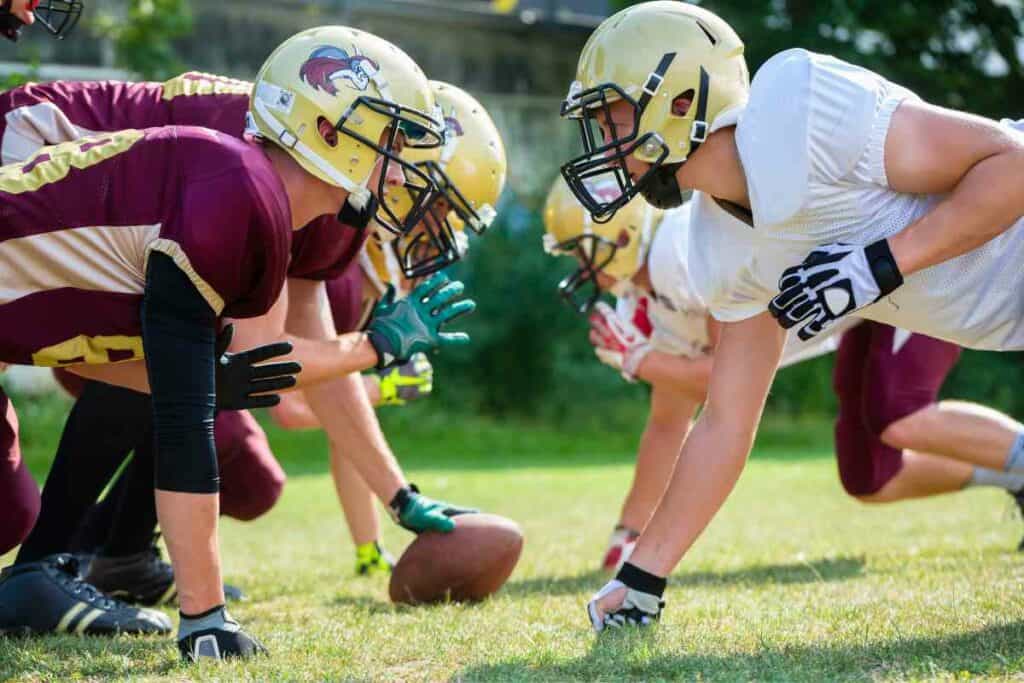
Understanding football positions is key to appreciating the modern game. Each position has its own unique responsibilities, and players must work together as a team to achieve success.
Offense Positions
In American football, the offense is the team that is responsible for scoring points. The offense consists of several players, each with their own unique role. Here are the most common offensive positions:
Quarterback
The quarterback is the most important player on the offense. They are responsible for leading the team, calling plays, and throwing the ball. The quarterback is usually the best passer on the team and has excellent decision-making skills. They are also expected to be able to read the defense and adjust the play accordingly.
Running Backs
Running backs are responsible for carrying the ball and gaining yards on the ground. They are usually smaller and more agile than other players on the offense. There are several different types of running backs, including power backs, speed backs, and third-down backs.
Wide Receivers
Wide receivers are responsible for catching the ball and gaining yards through the air. They are usually the fastest and most athletic players on the offense. There are several different types of wide receivers, including slot receivers, possession receivers, and deep-threat receivers.

Tight Ends
Tight ends are a mix of a wide receiver and offensive lineman. They are responsible for both catching the ball and blocking defensive players. Tight ends are usually bigger than typical wide receivers, but also spend a lot of time playing next to the offensive linemen.
Offensive Line
The offensive line is responsible for blocking defensive players and protecting the quarterback. There are five players on the offensive line, including the center, two guards, and two tackles. Each player on the offensive line has a specific role, and they must work together to create openings for the running backs and protect the quarterback.
| Position | Responsibilities |
|---|---|
| Quarterback | Leading the team, calling plays, throwing the ball |
| Running Backs | Carrying the ball, gaining yards on the ground |
| Wide Receivers | Catching the ball, gaining yards through the air |
| Tight Ends | Catching the ball, blocking defensive players |
| Offensive Line | Blocking defensive players, protecting the quarterback |
In summary, the offensive positions in football work together to move the ball down the field and score points. Each position has its own unique responsibilities, and they must work together as a team to be successful.
Defense Positions
In football, the defense is responsible for preventing the opposing team from scoring points. A successful defense requires coordination and strategy among the players. There are three main categories of defensive positions in football: the Defensive Line, Linebackers, and Secondary.
Defensive Line
The Defensive Line is the first line of defense against the opposing team’s offense. The players in the Defensive Line are responsible for stopping the run and putting pressure on the quarterback. There are four positions in the Defensive Line: Nose Tackle, Defensive Tackle, and two Defensive Ends.
| Position | Responsibilities |
|---|---|
| Nose Tackle | Lines up directly over the center and is responsible for stopping the run up the middle. |
| Defensive Tackle | Lines up on either side of the Nose Tackle and is responsible for stopping the run and putting pressure on the quarterback. |
| Defensive End | Lines up on the outside of the Defensive Tackle and is responsible for containing the run and putting pressure on the quarterback. |
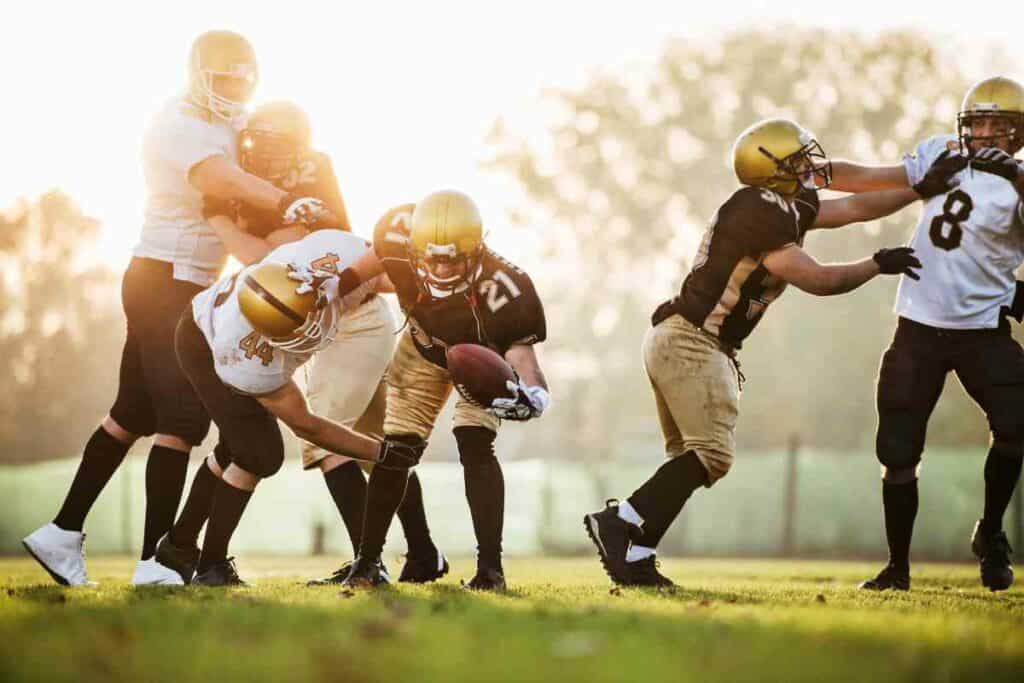
Linebackers
The Linebackers are responsible for stopping the run and covering receivers. There are two types of Linebackers: Inside Linebackers and Outside Linebackers.
| Position | Responsibilities |
|---|---|
| Inside Linebacker | Lines up in the middle of the defense and is responsible for stopping the run and covering the middle of the field. |
| Outside Linebacker | Lines up on the outside of the defense and is responsible for stopping the run and covering the outside of the field. |
Secondary
The Secondary is responsible for covering the receivers and preventing the opposing team from completing passes. There are two positions in the Secondary: Cornerback and Safety.
| Position | Responsibilities |
|---|---|
| Cornerback | Lines up on the outside of the defense and is responsible for covering the opposing team’s wide receivers. |
| Safety | Lines up in the back of the defense and is responsible for covering the deep part of the field and helping to stop the run. |
In conclusion, a successful defense requires coordination and strategy among the players. The Defensive Line is responsible for stopping the run and putting pressure on the quarterback. The Linebackers are responsible for stopping the run and covering receivers. The Secondary is responsible for covering the receivers and preventing the opposing team from completing passes.
Special Teams Positions
Special Teams in football are responsible for the kicking and returning aspects of the game. The positions on Special Teams include the Kicker, Punter, and Returners.

Kicker
The Kicker is responsible for kicking field goals, extra points, and kickoffs. They are usually the player with the strongest leg on the team. Field goals and extra points are scored by kicking the ball through the uprights on the opponent’s side of the field. Kickoffs are used to start the game and begin the second half, and they occur after a team scores a touchdown or field goal. Kickers must have accuracy, power, and consistency to be successful.
Punter
The Punter is responsible for punting the ball to the opposing team after the offense fails to get a first down. The goal of punting is to give the opposing team poor field position. Punters must have the ability to kick the ball high and far while also having control over the direction of the ball.
Returners
Returners are responsible for returning kickoffs and punts. The two types of returners are Punt Returners and Kick Returners. Punt Returners catch punts and attempt to run the ball back as far as possible, while Kick Returners catch kickoffs and attempt to run the ball back as far as possible. Returners must have good hands, quickness, and the ability to make defenders miss.
| Position | Responsibilities |
|---|---|
| Kicker | Kick field goals, extra points, and kickoffs |
| Punter | Punt the ball to the opposing team |
| Punt Returner | Catch punts and attempt to run the ball back as far as possible |
| Kick Returner | Catch kickoffs and attempt to run the ball back as far as possible |
In conclusion, Special Teams is an essential aspect of football that requires a unique set of skills. Kickers, Punters, and Returners all play a crucial role in determining the outcome of the game.
Positional Skills and Requirements
Physical Skills
Football is a physically demanding sport, and each position requires specific physical attributes to perform effectively. Some positions require speed, while others require strength. Here are some examples of the physical skills needed for different positions:
| Position | Physical Skills |
|---|---|
| Quarterback | Arm strength, accuracy, footwork |
| Running Back | Speed, agility, balance |
| Wide Receiver | Speed, agility, height |
| Offensive Lineman | Strength, size, footwork |
| Defensive Lineman | Strength, speed, agility |
| Linebacker | Speed, strength, tackling ability |
| Defensive Back | Speed, agility, reaction time |
| Kicker/Punter | Leg strength, accuracy |
Mental Skills
Football is not just a physical game; it also requires mental toughness and intelligence. Players need to be able to read the game and make quick decisions under pressure. Here are some examples of the mental skills needed for different positions:
| Position | Mental Skills |
|---|---|
| Quarterback | Decision-making, leadership, ability to read defenses |
| Running Back | Vision, patience, ability to read blocks |
| Wide Receiver | Route-running, ability to read coverages, focus |
| Offensive Lineman | Ability to read defenses, communication skills, adaptability |
| Defensive Lineman | Ability to read offensive plays, anticipation, quick thinking |
| Linebacker | Ability to read offenses, leadership, communication skills |
| Defensive Back | Ability to read offenses, anticipation, quick thinking |
| Kicker/Punter | Mental toughness, ability to handle pressure, focus |
Communication Skills
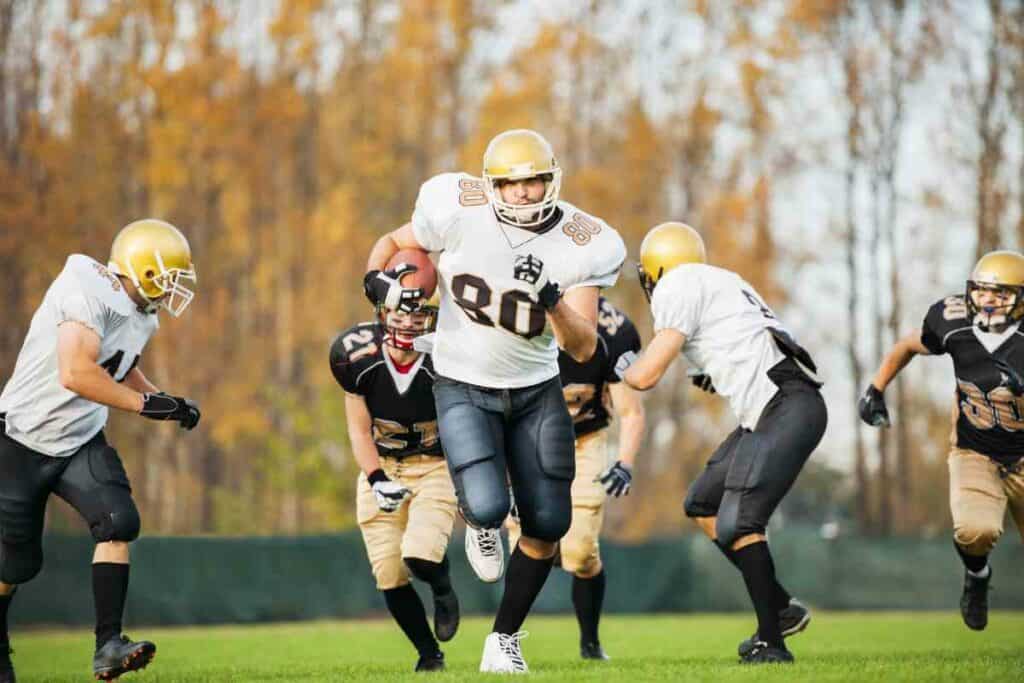
Effective communication is crucial in football, as players need to work together as a team to achieve success. Players need to be able to communicate effectively both on and off the field. Here are some examples of the communication skills needed for different positions:
| Position | Communication Skills |
|---|---|
| Quarterback | Ability to call plays, communicate with coaches, lead the offense |
| Running Back | Ability to communicate with offensive linemen, read blocks, adjust to the defense |
| Wide Receiver | Ability to communicate with the quarterback, adjust routes, read coverages |
| Offensive Lineman | Ability to communicate with other linemen, read defenses, adjust blocking schemes |
| Defensive Lineman | Ability to communicate with other linemen, read offenses, adjust to blocking schemes |
| Linebacker | Ability to communicate with other linebackers, read offenses, adjust to blocking schemes |
| Defensive Back | Ability to communicate with other defensive backs, read offenses, adjust to coverage schemes |
| Kicker/Punter | Ability to communicate with the holder and long snapper, adjust to weather conditions, stay focused |
In summary, each position in football requires a unique set of physical, mental, and communication skills. Players need to be fast, agile, and well-rounded to succeed in this sport. Effective communication is also crucial for success, as players need to work together as a team to achieve their goals.
Positional Roles in Different Sports
Football vs Baseball
Football and baseball are two different sports with unique positional roles. While football has 11 players on the field at a time, baseball has nine. In football, each player has a specific role to play, while in baseball, players have multiple roles to play.
| Football Position | Baseball Position |
|---|---|
| Quarterback | Pitcher |
| Running Back | Catcher |
| Wide Receiver | Outfielder |
| Tight End | First Baseman |
| Offensive Lineman | Infielder |
| Defensive Lineman | Third Baseman |
| Linebacker | Shortstop |
| Cornerback | Second Baseman |
| Safety | Utility Player |
Football vs Basketball
Football and basketball are two different sports with their own unique positional roles. While football has 11 players on the field at a time, basketball has five. In football, players have specific roles to play, while in basketball, players have multiple roles to play.
| Football Position | Basketball Position |
|---|---|
| Quarterback | Point Guard |
| Running Back | Shooting Guard |
| Wide Receiver | Small Forward |
| Tight End | Power Forward |
| Offensive Lineman | Center |
| Defensive Lineman | N/A |
| Linebacker | N/A |
| Cornerback | N/A |
| Safety | N/A |
Football vs Hockey
Football and hockey are two different sports with unique positional roles. While football has 11 players on the field at a time, hockey has six. In football, players have specific roles to play, while in hockey, players have multiple roles to play.
| Football Position | Hockey Position |
|---|---|
| Quarterback | Center |
| Running Back | Left Wing |
| Wide Receiver | Right Wing |
| Tight End | Defenseman |
| Offensive Lineman | N/A |
| Defensive Lineman | Goaltender |
| Linebacker | N/A |
| Cornerback | N/A |
| Safety | N/A |
Football vs Soccer
Football and soccer are two different sports with unique positional roles. While football has 11 players on the field at a time, soccer has 10 outfield players and one goalkeeper. In football, players have specific roles to play, while in soccer, players have multiple roles to play.
| Football Position | Soccer Position |
|---|---|
| Quarterback | Midfielder |
| Running Back | Forward |
| Wide Receiver | Winger |
| Tight End | Defender |
| Offensive Lineman | N/A |
| Defensive Lineman | N/A |
| Linebacker | N/A |
| Cornerback | N/A |
| Safety | N/A |
Conclusion
And there you have it! A whistle-stop tour of every football position and their importance on the field. From the dynamic offensive players whose goal is to put points on the board, to the brick-wall defense looking to halt any advancements, and let’s not forget the unsung heroes of special teams, ensuring field position and crucial points are always in their favor. Football truly is a game of strategy, skill, and teamwork. So, the next time you’re watching a game or discussing strategies with friends, you’ll know exactly who does what and why. Here’s to a better understanding and deeper appreciation of the great game of American football. Cheers!
Frequently Asked Questions
What are the 22 positions in football?
There are 22 positions in football, 11 on offense and 11 on defense. The positions on offense are quarterback, running back, fullback, wide receiver, tight end, left tackle, left guard, center, right guard, right tackle, and kicker. The positions on defense are defensive tackle, defensive end, nose tackle, middle linebacker, outside linebacker, cornerback, safety, and punter.
What are the defensive line positions in football?
The defensive line positions in football are defensive tackle, defensive end, and nose tackle. These players are responsible for stopping the run and putting pressure on the quarterback.
What is a SS in football?
SS stands for strong safety in football. The strong safety is a defensive back who plays close to the line of scrimmage and is responsible for stopping the run and covering tight ends.
What is the role of each football position?
Each football position has a specific role. For example, the quarterback is responsible for throwing the ball and leading the offense, while the middle linebacker is responsible for stopping the run and covering the middle of the field.
What are the different positions and roles in football?
There are many different positions and roles in football. Here is a table that summarizes the positions and their roles:
| Position | Role |
|---|---|
| Quarterback | Leads the offense and throws the ball |
| Running back | Carries the ball and catches passes |
| Fullback | Blocks for the running back |
| Wide receiver | Catches passes from the quarterback |
| Tight end | Blocks and catches passes |
| Left tackle | Protects the quarterback’s blind side |
| Left guard | Blocks for the running back |
| Center | Snaps the ball to the quarterback |
| Right guard | Blocks for the running back |
| Right tackle | Blocks for the running back |
| Kicker | Kicks field goals and extra points |
| Defensive tackle | Stops the run and puts pressure on the quarterback |
| Defensive end | Stops the run and rushes the quarterback |
| Nose tackle | Stops the run and takes up blockers |
| Middle linebacker | Stops the run and covers the middle of the field |
| Outside linebacker | Stops the run and covers the outside of the field |
| Cornerback | Covers wide receivers |
| Safety | Covers deep passes and stops the run |
| Punter | Kicks the ball on fourth down |
